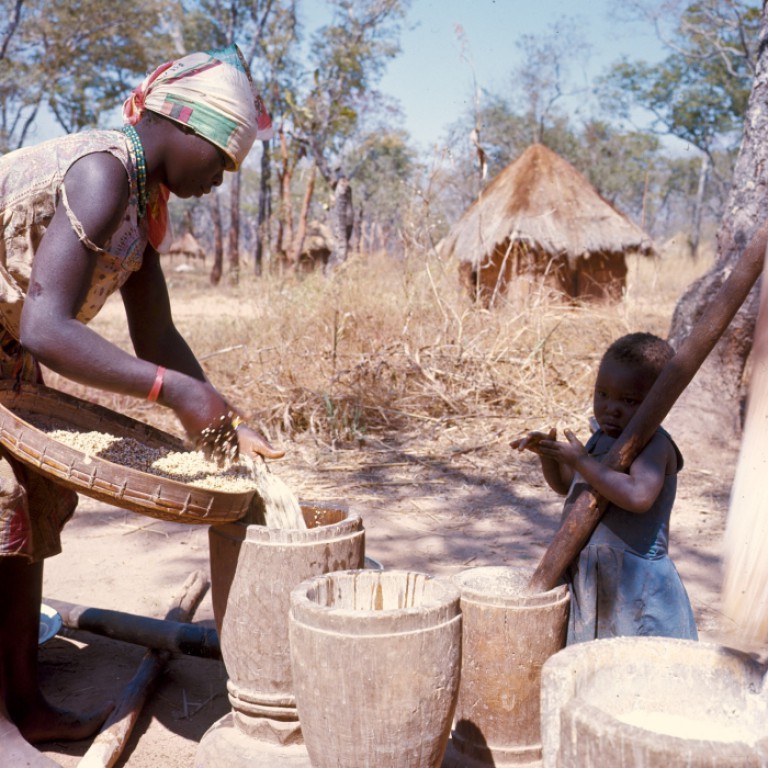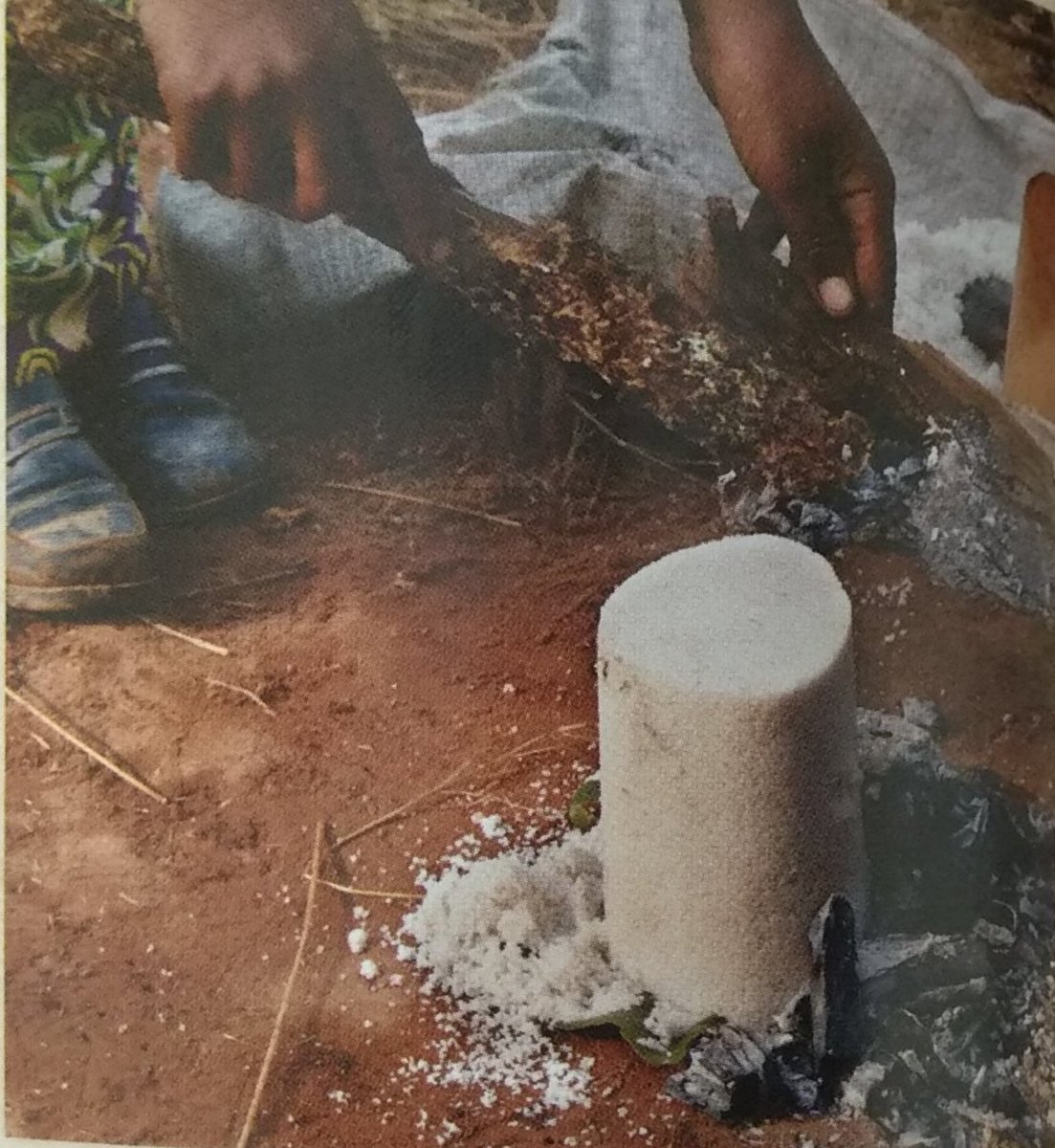
Photo credit: Culture trip
The Kaonde are a Bantu Speaking people who today live in the northwestern regions of Zambia. A numerically much smaller group live in the Democratic Republic of the Congo. However, they are not identified by the term Kaonde but rather by the Luba.
Their origins can be traced to the Luba Kingdom in Katanga in the present-day Democratic Republic of Congo and arrived in Zambia between the 16th and 17th centuries in three main groups, each unique in identity.
The first group spent some time south of the Kafue River, where they came into contact with the Ila people and decided to move back north, settling around Solwezi. This clan was under Chief Mushima and Kasongo, known as the River clan.
The second arrived from the north under Chief Kasempa of the Mushroom Clan. They settled to the south as the River Clan had already occupied the north.
Lastly, the third clan, the Monkey Clan under Chief Ntambo, arrived from the south, from the Barotse Floodplain, where they lived among the Aluyi/Kololo/Lozi settling in the west of Kaondeland.
N/B: It was common to name clans by their totem(a spirit being that serves as an emblem of a group of people).
Language
They speak the kiiKaonde/Kaonde/Luba Kaonde/Chikaonde/Kahonde, a Bantu language. It is spoken by approximately 400,000 people, about 2.3% of the Zambian population.
Name
The name Kaonde means thin one. It is from the name of the river where the Kaonde settled, River Kaondi, which is narrow and thin, hence the people living around it being called a Kaondi by the Lunda people.
Political and Social structure
The Kaonde people are organized in matrilineal clans, meaning people trace their family lineage through their mother and not their father. Typically, a wife and her new husband would live in her mother’s village after marriage.
In this type of society, one either adopts their mother’s family name or simply a personal name and then uses their mother’s clan name for additional identification. Thus, when tracing someone’s ancestry, you start by establishing his mother’s clan name.
The kinships recognized by the Kaonde are eight: Inanji (mother), mwisho (mother’s brother), kolojanji (older sibling), nkasanji (younger sibling), mwana (child), mwipwa (nephew or niece), nkambo (grandparent), munkana (grandchild).
The smallest organisation unit is the family and then the village under the village headman. A senior member of the family, often a male, is appointed as a village headman and is accountable to the chief. Often but not always, the headman is the oldest male in the family. Once inaugurated as the village headman, he adopts the name of that village.
A group of villages make up a clan under the leadership of a chief. It is the highest organizational unit. Each has its name drawn from objects of veneration, honorific titles, or events experienced by them or its ancestor.
Religious Beliefs
The Kaonde believed in a god, Lesa, before the coming of Christian missionaries. They thought that Lesa was married and lived in the sky while his wife, Chandashi on earth.
Lesa showed his power through thunder and lightning, and Chandashi manifested herself through earth tremors.
They also believed in spirits, Chimvule, who was in the form of the shadow. All things have shadows, therefore, having spirits. Each home had a stick known as chipanda planted outside the house, representing the Chimvule, and was also the place where the men would pray.
When a man died, he no longer had a shadow; therefore, his Chimvule remained on earth. The living had to appease the Chimvule of the departed to avoid its wrath.
Traditional ceremonies
The Kaonde celebrate different traditional ceremonies depending on the region/clan of residence. However, the main one celebrated by all Kaonde in Kasempa district (traditional capital) is the Juba ja Nsomo.
The ceremony is held in June every year to celebrate a new harvest, honour the ancestral lineage and share the cultural wealth as a community.
Preparations start as early as February when people bring contributions like sorghum & livestock to the palace. Tasting the first crop of every harvest before the chief is taboo. If this happens, chaos will rock the chiefdom and the area invaded by snakes and wild animals.
At the end of May, the older women in the community then gather to pound sorghum for beer(munkhoyo). The Kaonde custom does not allow young girls to participate in this process.
During the event, the chief blesses the food and the land. He also prays to the ancestors to seek protection for his people.
He then tastes the traditional beer spitting some on the ground as a libation to the spirits and spraying some in the air to thank the heavenly God for giving them the strength to cultivate. They drink at intervals and put their feet to work in dancing.
During the ceremony, people dress up in their traditional attire and teach the youth their ancient ways of life.
Other notable ceremonies include;
- Kunyanta Ntanda held in July in Solwezi
- Ntongo held in September in Mufumbwe
- Lubinda held in August in Solwezi
- Musaka/Jikubi held in September in Mumbwa
Dances
The Kaonde have several dances performed at the various traditional ceremonies, such as the Katembo is performed by men and older women, with the music described as similar to reggae.
The mutomboko dance is a unique dance that honours hunters after a successful hunt, and the shonongo dance requires a partner and is similar to ballroom dancing. It is also performed at the Juba ja Nsomo ceremony.
Naming
They name their children based on events surrounding the birth of a child or in honour of an ancestor or living relative.
A typical example includes Butemwe, which means love, and Kapijimpanga, meaning hunter.
Initiation
When a young Kaonde girl has her first menstrual cycle, she goes through an initiation period called chisingu.
She is kept in isolation for about a week in a wooded area. Here she sleeps under a selected tree on a mat and is covered in a chitenge(a patterned cotton cloth). She is then revealed at the Juba ja Nsomo ceremony, with older women performing the machancha dance.
Boys nearing puberty receive a special medicine from their brothers-in-law, which is spread on their chest, and then they follow another prepubescent ritual.
Marriage
Once a man chooses his bride, he sends his mother and sisters with gifts to the girl’s parents to ask if she is ready for marriage. If the answer is yes, then the marriage is arranged.
The mother and sister return home, and the man proceeds to the girl’s village, where they are given a spare hut. They spend their first night(kulajika). No coitus takes place.
The following day, the bride’s mother cooks a big bowl of porridge and takes it to the bridal hut. The bride leaves the hut while the husband remains.
A day after, the marriage ceremony happens. The man is never allowed to look his mother-in-law in the face.
Housing
The people are known for their unique traditional houses. They have two main types of houses; a lukelo made out of termite mounds and dried grass, and a nkunka, entirely made of grass.
Economic Activity

Photo credit: Twitter
They practice salt-making, a skill passed on to younger generations. The women who specialized in this art gather soil from Kaimbwe Salt Pan. They burn the earth and put the ash through a dish with holes.
Water is then sieved through until it comes out clear. The mixture is then heated until all the moisture evaporates, leaving the salt.
The salt is then made into cone shapes and heated until it is solid, forming a type of salt rock called nsumba.
They also cultivate crops like sorghum, maize, millet, beans and cassava and practice hunting.
Some of them knew how to work with iron to produce spearheads, hoes and knives.
Additional Resources
Sound of Africa Series 47: Congo (Luba/Bakwanga, Luba, Luba/Kaonde, Kaonde, Lunda, Lunda/Ndembo)
Historical Migration of the Kaonde Clans from Southern Congo Into Zambia, pg. 23, Kapiji Kamuyange, by Dick Jaeger
Join the Lughayangu Community!

